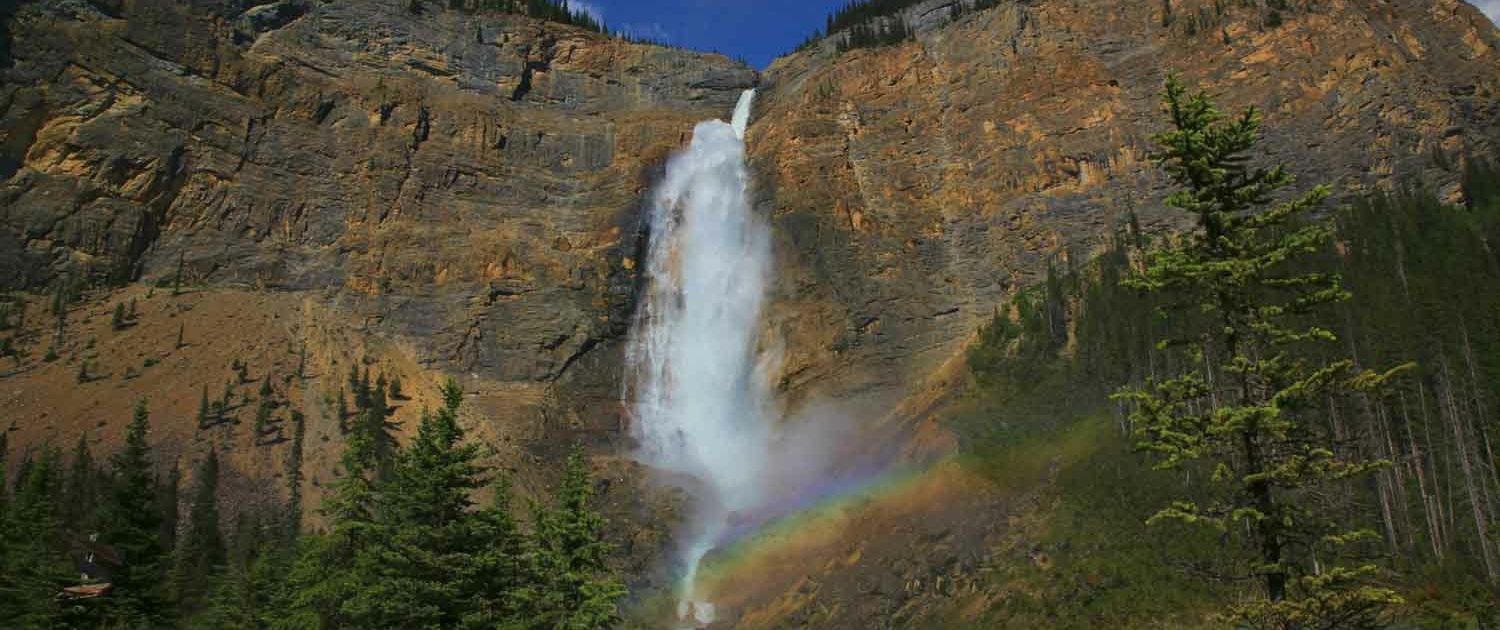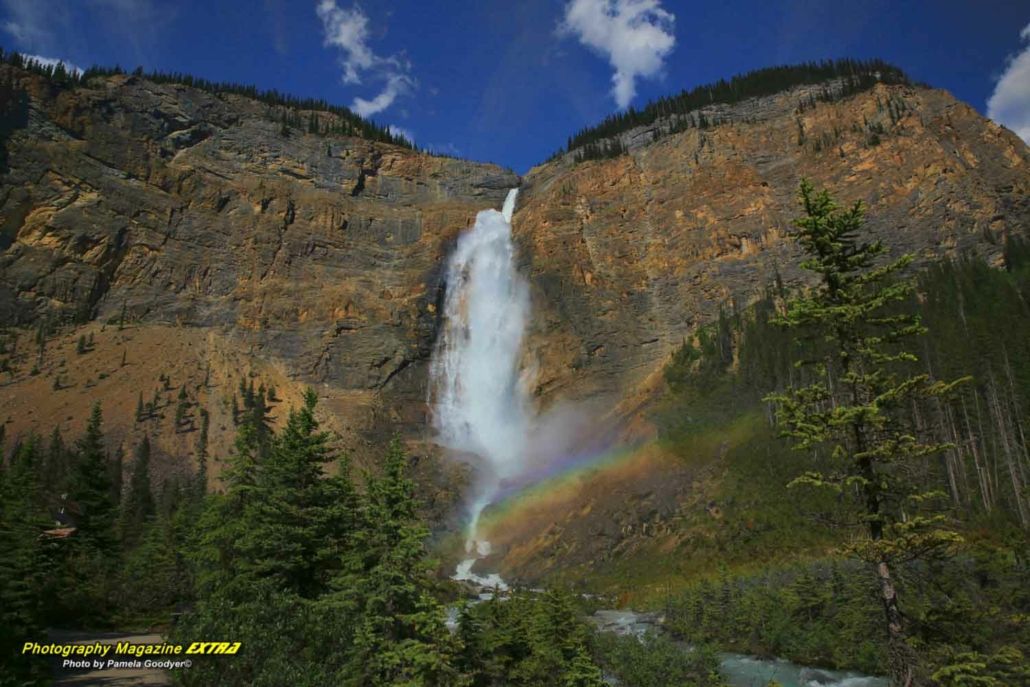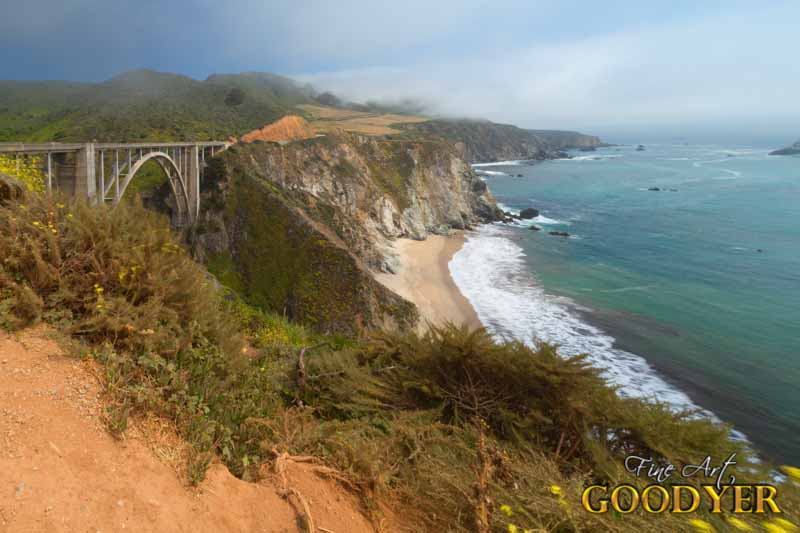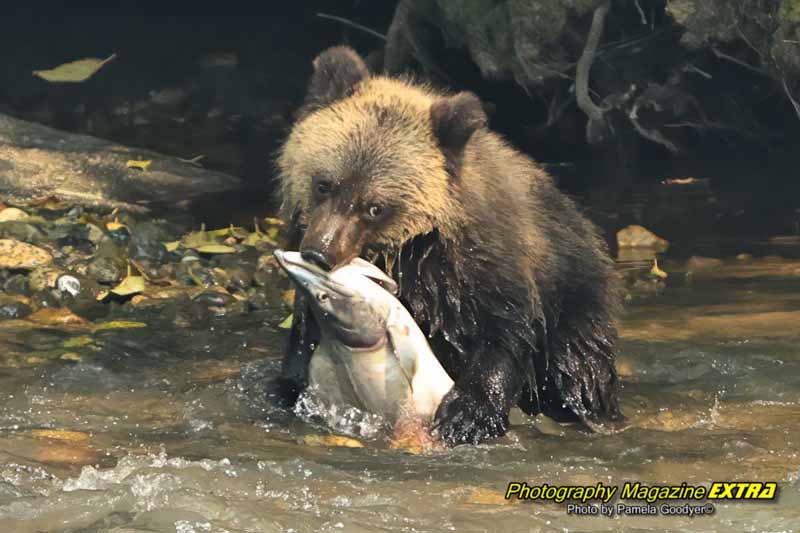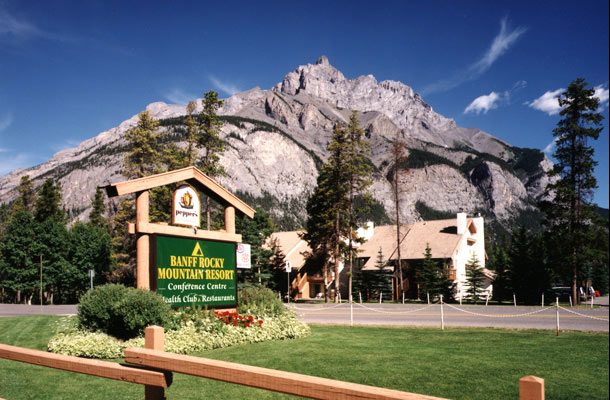This location is not always open all year. The road is closed for most of the winter. Be sure to check if it is open when you travel here. One year it was open the last week of June on our visit; another year, it was closed. Don’t miss this incredible spot if you can help it. Bring your tripod for your long exposure shot. Bring some lens cleaners also. If you get too close, the mist will hit your lens. This is a silky waters paradise.
The Canadian Rockies mountain system comprises the southeastern part of this system, laying between the Interior Plains of Alberta and Northeastern British Columbia on the east to the Rocky Mountain Trench of BC on the west. The southern end borders Idaho and Montana, the USA. In geographic terms, the boundary is at the Canada/US border, but in geological terms, it might be considered at Marias Pass in northern Montana. The northern end is at the Liard River in northern British Columbia.
PHOTOGRAPHING TAKAKKAW FALLS
Whether you’re a professional photographer or a casual snapshot taker, Takakkaw Falls is a must-visit.
There are several different vantage points from which to view and photograph Takakkaw Falls. An easy trail leads to the base of the falls, where you can get up close and personal with the roaring water. For a different perspective, head to the top of the falls via a short but steep hike. You’ll see the upper and lower sections of Takakkaw Falls and the surrounding mountains.
YOHO NATIONAL PARK – FACEBOOK PAGE
No matter what time of day or year you visit Takakkaw Falls, it will be an unforgettable experience!
WHEN TO GO
The falls are best seen during the summer when the water flow is strongest. Remember—the road to the falls was closed during our trip in the last week of June due to snow.
The road usually opens in late spring. In the summer, the falls are fully accessible with the highest water flow, but with big crowds. In the fall, there are fewer people and somewhat less water flow. The road closes in late fall.
The best time to photograph the falls is early morning or late afternoon when the sun is at a low angle and casts long shadows. During these times, the light reflects off the water and creates an incredible effect.
If you’re planning on photographing Takakkaw Falls or any other night sky targets, remember a few things. First, you’ll need a DSLR camera with a wide-angle lens (35mm or wider). Second, you must set your camera on a tripod to avoid blurring your photos. Finally, use a remote shutter release or self-timer to avoid camera shake.
With some planning and practice, you can capture fantastic photos of Takakkaw Falls and the Milky Way when they are visible!
PHOTOGRAPHY GEAR TO BRING
- Camera
- Tripod
- Wide Angle Lens & a Zoom Lens
- Polarizing Filter
- Extra Batteries and Memory Cards
WHAT ELSE TO BRING
- Organic sunscreen (sunscreen is a cancer-causer; the more it bakes into your skin, the more carcinogenic it gets).
- Hiking boots
- Water and Snacks
- Bug repellent
TAKAKKAW WATERFALL PHOTOGRAPHY
Learn how to do waterfall photography. We explain waterfall photography here.
HOW TO SET UP YOUR SHOT
Step 1: Put your camera on a tripod. You will also want to use a remote shutter release to expose the image. If you don’t have a self-timer, you can use the camera’s timer. You absolutely must use a tripod.
Step 2: Use live view
Step 3: Put your filter on your camera. Even on a cloudy day, you will want to use a Neutral Density Filter. It’s like sunglasses for your camera. You can do a more prolonged exposure, making the water movement silky. The darker the ND Filter, the longer you can expose it.
Step 4: Camera Settings
- Set your camera to Manual mode
- Set the aperture to the smallest one (most will be f/22; some may be f/29).
- Set your ISO to 100 or the lowest setting your camera allows.
Now, looking through the camera, roll the shutter speed so that the exposure level indicator reads ‘0’ on the exposure scale at the bottom of the screen. Without a filter, you may not get lower than 1/15th of a second, or even that low on a sunny day. This is why a neutral density filter is so important.
Step 5: Set your camera to a 2-second timer or use your shutter release to take the image. Evaluate the image. If your image has hot spots (areas of overexposed white spots), adjust your shutter speed and test again until it is just right. Remember, the darker the filter, the longer the exposure, and the milky flow looks better. Be sure to read about filters if you are not familiar with them.
TAKAKKAW WATERFALL
Takakkaw Falls, located in Yoho National Park near Field, British Columbia, is a waterfall. Its highest point is 302 meters (991 ft) from its base, making it the 45th tallest waterfall in eastern British Columbia. However, its true “free-fall” is only 260 meters or 850 ft.
“Takakkaw,” loosely translated from the Cree language, means something like “it is magnificent.” The Daly Glacier, part of the Waputik Icefield, feeds the falls. The glacier keeps the volume of the falls up during the warm summer months, and they are a tourist attraction, particularly in late spring after the dense snow melts, when the falls are at peak condition. The Takakkaw Falls were featured in the 1995 film Last of the Dogmen.
WE RUN TWO DIFFERENT PHOTO TOURS HERE

